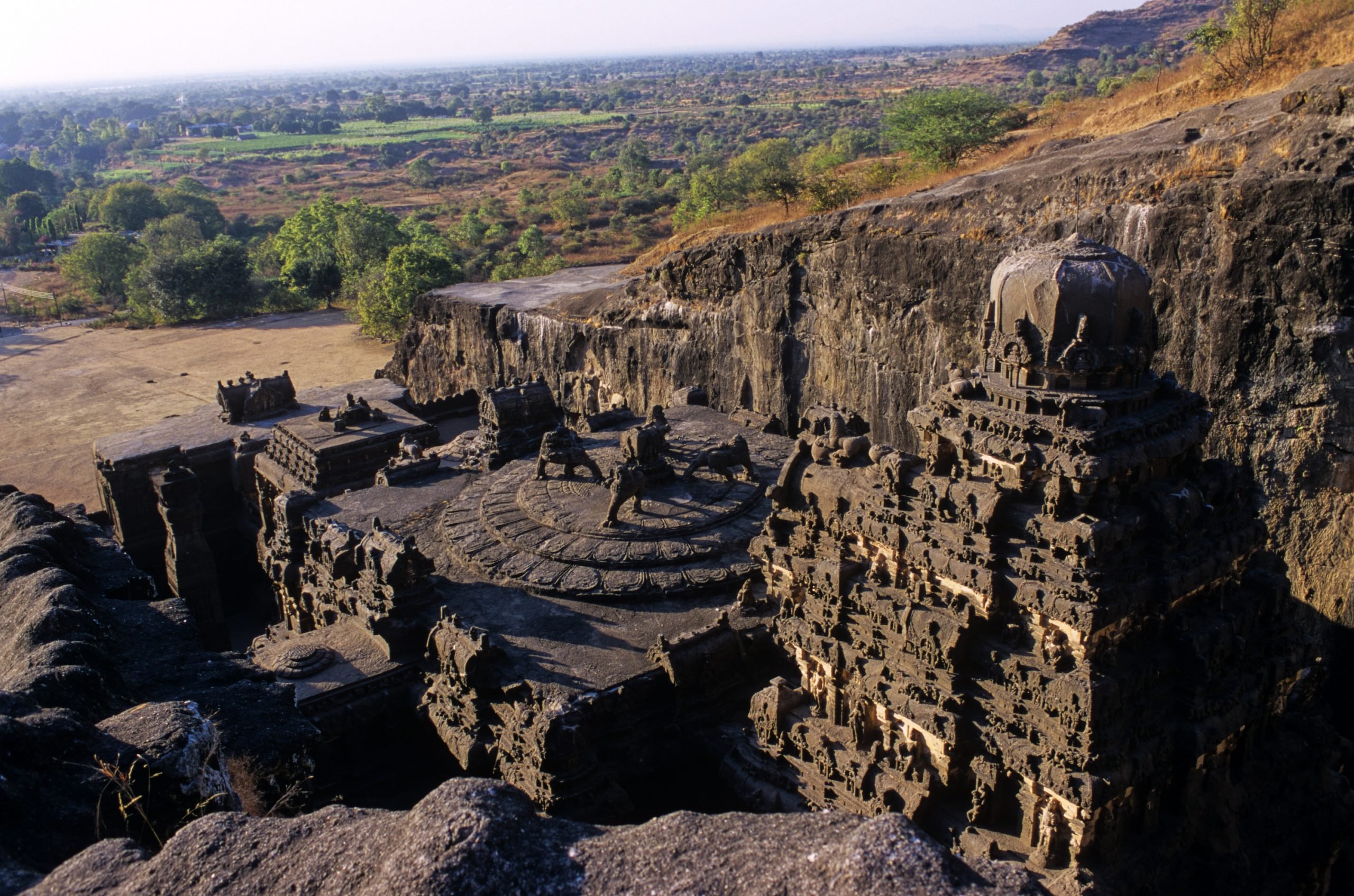
Mount Kailash remains an unconquered Himalayan peak. This is more a product of its religious significance than the mountaineering challenge posed by its atypical pyramid shape. For Hinduism, Buddhism, and Jainism alike, the 22,000-foot peak is among the most sacred and the 32-mile trek around its circumference endures as a major pilgrimage.
Located on the western tip of the Tibetan plateau, reaching Kailash is a grueling and remote endeavor—one reason, perhaps, that beginning in the 7th century C.E., the Rashtrakuta dynasty in western India decided build an architectural representation of Shiva’s dwelling place a little closer to home.
It’s known as Kailasa Cave, one of 34 in the Ellora Caves complex that has been cut and dug from the basalt rock of the Deccan plateau. “Cave” is something of a misnomer: caves are typically a natural phenomenon that bore into rock; Kailasa is the product of hazardous labor that freed rock from the hillside.
The entrance approaching Kailasa Temple. Photo: Getty Images.
Think of it as a giant monolith—one that at 100 feet high and 300 feet long would make it the world’s largest—with all four sides liberated and sculpted into pavilions, halls, vestibules, towers, and courtyards. To look upon Kailasa’s striking appearance in the context of its gentle hillside is to conjure the racket of hammer and chisel that played out for a century-and-a-half as 800 hardy monks turned rock into art.
Kailasa was built in reverse. The roof was hollowed out first, then the pillars, and last the base, completed in 773, the final year of the reign of Rashtrakutan king Krishna I after whom the temple was once named. It’s a three-dimensional, multi-story shrine to Shiva, one of the main deities of Hinduism. Taken as a whole, the complex’s profile is said to resemble the shape of Mount Kailash and was once painted white to mimic the Himalayan peak.
The exterior of the temple carved with statues. Photo: Getty Images.
Surrounded by an airy courtyard and flanked by columned chambers that gouge deep into the cliff face, the temple is approached via subsidiary halls and verandas that are linked by stone bridges. Inside, the temple is filled with sculptures of gods, goddesses and divine spirits, who enact two epic tales of good and evil, the Mahabharata and the Ramayana, which is set in the very same Maharashtra region. Understandably, Shiva is omnipresent. Known as the god of destruction, most often he’s depicted in his fiercest forms: crushing Apasmarapurusha, a representation of ignorance, and vanquishing demon cities at one moment. At others, Shiva is benevolent; he teaches, he bestows immortality, he dances.
Shiva presented as all-powerful in one of countless depictions at Kailasa Temple. Photo: courtesy Bruno Poppe.
Though Kailasa Temple centers on Hinduism, the Ellora Caves include devotional spaces to Buddhism and Jainism—the former are typically austere chambers with large Buddha sculptures and the latter are intricately carved with animals, flowers, and gods. Work on the temple caves spanned roughly 200 B.C.E. through 1000 C.E. with expert carvers employing their trade across the spaces, evidencing a spirit of religious tolerance that typified the region in the period.
Kailasa is considered the pinnacle of Indian rock-cut architecture, the practice of creating a structure through carving it out of solid natural rock, with the Ellora Caves listed as a UNESCO World Heritage Site in 1983.
Sometimes, archaeology gets big. In Huge! we delve deep into the world’s largest, towering, most epic monuments. Who built them? How did they get there? Why so big?